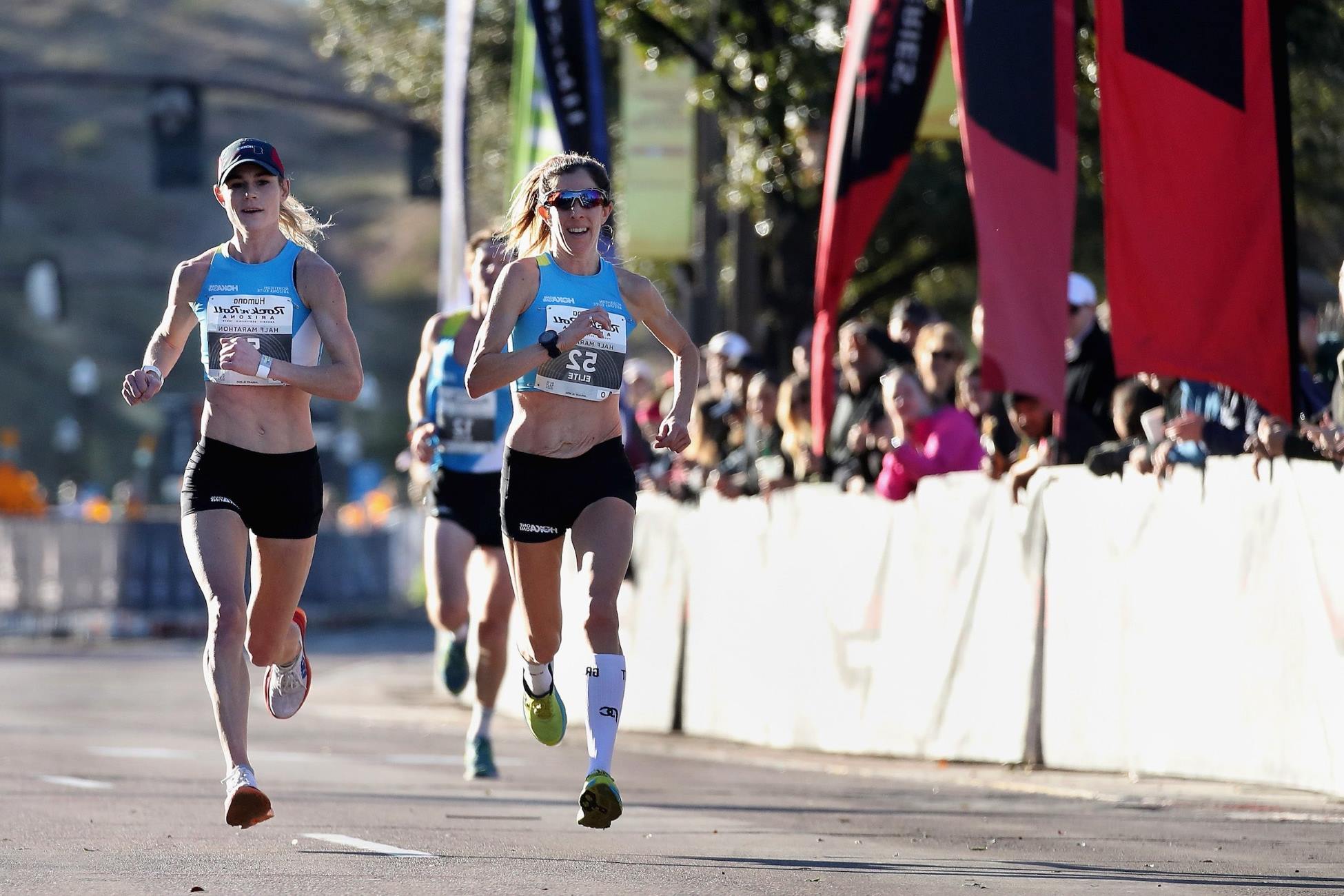Home>Training & Techniques>Training Plans>Preparing For A Race In Six Weeks: A Guide


Training Plans
Preparing For A Race In Six Weeks: A Guide
Published: February 28, 2024
Get ready for your race in six weeks with our comprehensive training plans. Achieve your goals and improve your performance with our expert guidance. Start your journey today!
(Many of the links in this article redirect to a specific reviewed product. Your purchase of these products through affiliate links helps to generate commission for Therunningadvisor.com, at no extra cost. Learn more)
Table of Contents
Setting your race goals
Setting clear and achievable race goals is the first step in preparing for a race. Whether you are a seasoned runner or a novice, having well-defined objectives can provide direction and motivation throughout your training journey. When establishing your race goals, it's essential to consider both performance-based and personal targets.
Performance-based goals
Performance-based goals focus on specific outcomes related to your race, such as achieving a personal best time, finishing within a certain rank, or completing the race without walking. These objectives are measurable and can serve as benchmarks for your progress. When setting performance-based goals, it's crucial to be realistic and consider factors such as your current fitness level, the race distance, and any potential obstacles you may encounter during the event.
Personal goals
In addition to performance-based targets, personal goals can add depth and meaning to your race experience. These goals may revolve around the emotional, psychological, or social aspects of the race. For instance, you might aim to enjoy the race and have fun, overcome mental barriers, or inspire others through your participation. Personal goals can provide a sense of fulfillment and satisfaction that goes beyond mere performance metrics.
The SMART approach
To ensure that your race goals are well-defined and attainable, consider applying the SMART criteria. This acronym stands for Specific, Measurable, Achievable, Relevant, and Time-bound. By framing your goals according to these principles, you can create a clear roadmap for your training and race day performance.
Example of SMART goals
An example of a SMART goal could be: "I will complete the 10K race in under 60 minutes by following a structured training plan, incorporating speed workouts, and maintaining a consistent pace throughout the race." This goal is specific (completing a 10K race in under 60 minutes), measurable (time-based), achievable (with proper training and preparation), relevant to the race distance, and time-bound (within the race day timeframe).
By setting well-defined race goals that encompass both performance-based and personal objectives, you can lay a solid foundation for your training plan and approach the race with clarity and purpose. These goals will guide your efforts, keep you motivated, and ultimately contribute to a fulfilling and rewarding race experience.
Creating a training schedule
Crafting a well-structured training schedule is pivotal in preparing for a race in six weeks. A comprehensive plan not only enhances physical performance but also minimizes the risk of injury and burnout. When designing your training schedule, it's essential to consider various factors, including your current fitness level, the race distance, and your individual strengths and weaknesses as a runner.
Assessing your current fitness level
Before outlining your training regimen, it's crucial to assess your current fitness level. This evaluation can help determine the starting point for your training and guide the progression of your workouts. Factors to consider include your running experience, recent race times, average weekly mileage, and any existing injuries or physical limitations. By understanding your baseline fitness, you can tailor your training schedule to suit your specific needs and capabilities.
Determining the race-specific focus
The nature of the race you are preparing for should heavily influence the structure of your training schedule. For instance, if you are training for a 10K race, your schedule may emphasize speed workouts, tempo runs, and interval training to improve your anaerobic capacity and running efficiency. On the other hand, if you are gearing up for a half marathon, your training plan may incorporate longer distance runs, endurance-building exercises, and strategies for pacing and fueling during the race.
Balancing key training components
An effective training schedule encompasses a balance of key components, including long runs, speed work, cross-training, rest days, and recovery sessions. Long runs are essential for building endurance and mental toughness, while speed work, such as intervals and fartleks, enhances your speed and aerobic capacity. Cross-training activities, such as cycling or swimming, can complement your running routine and reduce the risk of overuse injuries. Additionally, incorporating rest days and recovery sessions into your schedule is vital for allowing your body to recuperate and adapt to the training load.
Gradual progression and tapering
To prevent overexertion and minimize the likelihood of injury, it's important to incorporate gradual progression into your training schedule. This involves incrementally increasing the intensity, duration, and volume of your workouts to allow your body to adapt and improve without undue strain. Furthermore, implementing a tapering phase in the final weeks leading up to the race can optimize your performance by ensuring that you are well-rested and fully recovered on race day.
By meticulously crafting a training schedule that aligns with your race goals, fitness level, and the specific demands of the event, you can optimize your preparation and enhance your chances of a successful race performance. A well-structured training plan not only cultivates physical readiness but also instills confidence and mental fortitude, ultimately contributing to a gratifying and fulfilling race experience.
Choosing the right gear and equipment
Selecting the appropriate gear and equipment is a crucial aspect of race preparation, as it directly impacts your comfort, performance, and overall race experience. From running shoes to apparel and accessories, each component plays a significant role in ensuring that you are adequately equipped to tackle the challenges of the race. Here's a comprehensive guide to help you make informed choices when it comes to your race gear and equipment.
Running Shoes
The foundation of your running gear, the right pair of shoes can make a substantial difference in your performance and injury prevention. When choosing running shoes, consider factors such as your foot type, running gait, and the terrain of the race. It's advisable to visit a specialty running store for a gait analysis and professional fitting to ensure that you select shoes that provide adequate support, cushioning, and stability.
Apparel
Opting for moisture-wicking, breathable, and lightweight apparel can enhance your comfort and performance during the race. Consider the weather conditions expected on race day and choose clothing that provides the appropriate level of insulation and protection. Additionally, investing in high-quality running socks can help prevent blisters and discomfort, contributing to a more enjoyable running experience.
Accessories
From hydration belts and water bottles to GPS watches and reflective gear, accessories can offer convenience and safety during the race. Ensure that your accessories are race-appropriate and complement your running style. For longer races, such as half marathons or marathons, carrying energy gels, electrolyte tablets, and other fueling options can be essential for maintaining energy levels and hydration throughout the event.
Race Belt or Bib Holder
If the race provides a bib, consider using a race belt or bib holder to securely display your race number without the need for safety pins. This can streamline the pre-race preparation and prevent any distractions or discomfort caused by traditional pinning methods.
Weather-Appropriate Gear
In the case of inclement weather, having the appropriate gear can be a game-changer. Consider investing in a lightweight, waterproof jacket or a cap to shield yourself from rain or excessive sun exposure. Additionally, wearing a hat or visor can help manage sweat and provide protection for your eyes.
Trial and Familiarization
It's essential to test your gear and equipment during training runs to ensure that they are comfortable and perform as expected. Avoid using new gear on race day to prevent potential discomfort or unexpected issues. Familiarizing yourself with your gear can also contribute to a sense of confidence and readiness as you approach the race.
By carefully selecting gear and equipment that aligns with your specific needs and the demands of the race, you can optimize your comfort, performance, and overall race day experience. Prioritizing quality, functionality, and suitability can contribute to a seamless and enjoyable running experience, allowing you to focus on achieving your race goals with confidence and determination.
Nutrition and hydration plan
Crafting a well-rounded nutrition and hydration plan is paramount in preparing for a race in six weeks. Proper fueling and hydration not only optimize physical performance but also support overall health and well-being during training and on race day. Here's a comprehensive guide to help you develop an effective nutrition and hydration strategy for your upcoming race.
Caloric and Macronutrient Needs
Understanding your caloric and macronutrient requirements is essential for sustaining energy levels and promoting recovery throughout your training period. As a general guideline, aim to consume a balanced diet that includes an adequate intake of carbohydrates, protein, and healthy fats. Carbohydrates serve as the primary fuel source for endurance activities, making them crucial for sustaining energy levels during long runs and race day. Incorporating lean proteins supports muscle repair and growth, while healthy fats contribute to overall health and satiety.
Pre-Run Nutrition
Prior to your training runs and on race day, focus on consuming easily digestible carbohydrates to top off your glycogen stores and provide readily available energy. Opt for light, carbohydrate-rich snacks such as bananas, energy bars, or toast with honey. It's important to experiment with different pre-run foods during your training to identify options that sit well with your stomach and provide sustained energy without causing discomfort.
Hydration Strategies
Hydration plays a pivotal role in maintaining performance and preventing dehydration-related issues. Develop a hydration plan that involves regular fluid intake throughout the day and during your training runs. Aim to consume adequate water and, if necessary, electrolyte-replenishing beverages to offset fluid losses from sweating. Monitoring your urine color can serve as a simple indicator of hydration status – aim for a pale yellow color, indicating proper hydration.
Read more: Deciding When To Skip A Race: A Guide To DNS
Race Day Fueling
For longer races, such as half marathons or marathons, it's crucial to implement a race day fueling strategy. This may involve consuming energy gels, sports drinks, or other easily digestible sources of carbohydrates and electrolytes at specific intervals during the race. Practice your race day fueling strategy during training runs to gauge its effectiveness and minimize the risk of gastrointestinal distress on race day.
Post-Run Recovery Nutrition
After completing your training runs, prioritize post-run nutrition to support muscle recovery and replenish glycogen stores. Consuming a combination of carbohydrates and protein within the first 30 minutes to an hour post-run can enhance recovery and reduce muscle soreness. Options such as chocolate milk, a protein smoothie, or a balanced meal can effectively facilitate the recovery process.
Individualized Approach
It's important to recognize that nutrition and hydration needs can vary among individuals based on factors such as body composition, sweat rate, and dietary preferences. Experimenting with different foods, beverages, and timing strategies during training can help you identify the most effective approach for your specific needs and preferences.
By developing a personalized nutrition and hydration plan that aligns with your training schedule, race goals, and individual requirements, you can optimize your physical readiness and performance on race day. Prioritizing proper fueling and hydration not only enhances your running experience but also contributes to overall well-being and enjoyment throughout the training process.
Mental preparation and visualization techniques
Mental preparation and visualization techniques are integral components of race readiness, playing a significant role in enhancing performance, managing stress, and fostering a positive mindset. As you embark on your six-week race preparation journey, dedicating attention to mental fortitude can profoundly impact your overall race experience.
Understanding the Power of the Mind
The mind-body connection in running is undeniable, with mental resilience often being the differentiating factor in overcoming challenges and achieving peak performance. By acknowledging the influence of mental preparedness on physical outcomes, you can proactively cultivate mental strength and resilience to navigate the demands of training and race day.
Positive Self-Talk and Affirmations
Harnessing the power of positive self-talk and affirmations can bolster confidence and motivation throughout your training. By consciously replacing self-doubt and negative thoughts with affirming statements, you can cultivate a resilient and optimistic mindset. Affirmations such as "I am strong and capable" or "I embrace challenges with determination" can serve as powerful tools in reinforcing a positive self-image and bolstering mental resilience.
Visualization and Mental Rehearsal
Engaging in visualization and mental rehearsal techniques can effectively prepare your mind for the race ahead. Take time to vividly visualize yourself crossing the finish line, maintaining a strong and steady pace, and overcoming any obstacles with composure. By mentally rehearsing various scenarios and race-day situations, you can instill a sense of familiarity and confidence, reducing anxiety and enhancing mental readiness.
Stress Management and Relaxation Techniques
Incorporating stress management and relaxation techniques into your routine can mitigate pre-race jitters and promote a calm and focused mindset. Practices such as deep breathing exercises, meditation, and progressive muscle relaxation can help alleviate tension and anxiety, allowing you to approach training runs and race day with a composed and centered demeanor.
Goal Setting and Outcome Focus
Setting clear and attainable race goals, coupled with an outcome-focused mindset, can provide a sense of purpose and direction throughout your training. By aligning your mental focus with specific performance and personal objectives, you can channel your energy and determination towards meaningful outcomes, fostering a resilient and goal-oriented mindset.
Embracing Challenges and Adversity
Embracing challenges as opportunities for growth and learning can shift your perspective on training and race day obstacles. Viewing setbacks as temporary hurdles rather than insurmountable barriers can cultivate mental resilience and adaptability, empowering you to navigate the ebb and flow of the race with tenacity and grace.
By integrating mental preparation and visualization techniques into your race preparation, you can fortify your mental resilience, enhance performance, and approach the race with a poised and determined mindset. Embracing the power of the mind as a vital component of your training journey can elevate your overall race experience, instilling confidence, and fortitude as you pursue your race goals.
Recovery and tapering strategies
Recovery and tapering strategies are pivotal components of race preparation, playing a crucial role in optimizing physical readiness, minimizing the risk of injury, and ensuring peak performance on race day. As you approach the final weeks leading up to your race, implementing effective recovery and tapering techniques can significantly impact your overall race experience.
Importance of Recovery
Prioritizing post-run recovery is essential for allowing your body to adapt to the training load and repair muscle tissue. Adequate recovery facilitates the consolidation of training adaptations, reducing the likelihood of overuse injuries and enhancing overall performance. Incorporating recovery strategies into your training plan can promote physical well-being and readiness for the upcoming race.
Active Recovery
Engaging in active recovery activities, such as gentle stretching, yoga, or low-impact cross-training, can facilitate blood circulation, alleviate muscle tension, and promote flexibility. These activities aid in the removal of metabolic by-products from muscles, expediting the recovery process and reducing post-run soreness.
Rest and Regeneration
Integrating rest days into your training schedule is paramount for allowing your body to recuperate and rebuild. Embracing rest as an integral part of the training process is essential for preventing burnout and ensuring that you approach race day feeling refreshed and revitalized.
Nutrition and Hydration
Optimizing post-run nutrition and hydration is fundamental for supporting recovery. Consuming a balanced meal or snack containing carbohydrates and protein within the post-run window can replenish glycogen stores and facilitate muscle repair. Additionally, maintaining proper hydration levels aids in the efficient transport of nutrients and supports the body's recovery processes.
Tapering Phase
In the final weeks leading up to the race, implementing a tapering phase is crucial for maximizing performance and minimizing fatigue. Tapering involves a gradual reduction in training volume and intensity while maintaining workout frequency. This approach allows for the accumulation of training adaptations and ensures that you arrive at the race start line feeling fresh and energized.
Read more: Overcoming Plantar Pain In Just Four Weeks
Psychological Readiness
Tapering not only benefits physical recovery but also contributes to psychological readiness. It provides an opportunity to alleviate pre-race anxiety, build confidence, and cultivate a positive mindset. Embracing the tapering phase as a time for mental preparation can enhance focus and motivation leading up to the race.
Race Simulation
Incorporating race simulation workouts during the tapering phase can help reinforce race strategies, pacing, and mental preparedness. These workouts provide a sense of familiarity with race conditions and instill confidence in your ability to execute your race plan effectively.
By integrating comprehensive recovery and tapering strategies into your race preparation, you can optimize physical readiness, enhance mental fortitude, and approach the race with confidence and vitality. Embracing these strategies as integral components of your training journey can contribute to a rewarding and successful race experience.







